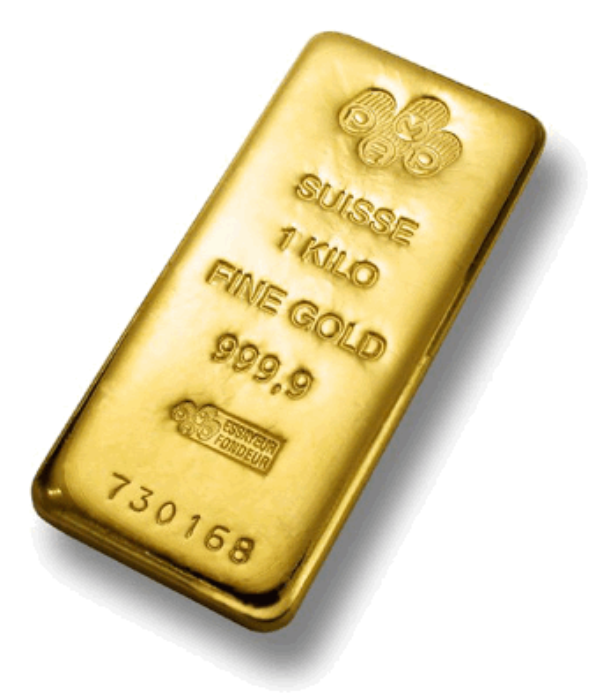
8 Inflation-Proof Investments to Hedge Against the Dollar Devaluation and Inflation Risk
More and more investors are growing alarmed at what they see as the steady attack on the value and stability of the dollar. Between rising annual federal deficits and the over $21 trillion total U.S. federal debt time bomb, the future of the dollar and dependably low inflation is no longer a sure and certain ultimate outcome. This is why sensible investors are hedging their portfolios against both dollar devaluation and risks of significantly higher inflation. Here we look at seven solid choices to accomplish both of these goals.
Gold and Silver Bullion

It often comes as a shock to many investors to learn that studies on investments outperforming inflation show gold only outpaces the inflation genie some 54 percent of the time. This is not a fair result though. In cases where hyperinflation or substantial currency devaluation becomes the order of the day, gold (and silver too) massively outdoes inflation. In environments with high and continuous inflation, you need a prolonged depth of exposure to gold.
The surest way to reliably own gold is in the physical bullion form of it. The key is to obtain and store it in the least expensive way possible. What you need when you opt for this most secure form of gold and silver are the most broadly minted, traded, and liquid forms of bullion. This means that your top choices should nearly always be American Eagles, Canadian Maple Leafs, Vienna Philharmonics, or the British Britannia. All are popular, easy to sell in nearly all countries around the world, and come with low premiums (and discounts) over spot bullion prices.
When you are looking to make some of the smartest investments in gold, you should consider a Gold IRA. It is critically important to use a reputable Gold IRA company. These three companies will steer you in the right direction and help you to pick out the best tax-advantaged gold products possible for your situation.
Gold and Silver ETFs
Some people are more concerned about low entry and exit fees, highest liquidity, instant saleability, and split-second diversification. In these cases, Gold and Silver ETFs may be your best option for hedging against devaluing dollars and inflation. The truth about these various ETFs is that not all of them were created equal.
The best performing ETFs are those that are most closely correlated to the underlying price of gold. The least desirable ETFs have baskets of gold miner stocks, which consistently do not closely match up in performance to the underlying price of gold (or silver). Individual gold company stocks introduce a variety of risks to the equation, such as possible corporate quarterly losses, financial bankruptcy potential, and strikes at or seizure of mines and other valuable assets around the globe. All of these risks can lead to a wide divergence between the performance of gold and the price of a Gold ETF made up of gold mining stocks.
Analysts generally recommend one of two Gold ETFs that deliver the goods. These are the SPDR Gold Trust ETF trading under the appropriate symbol of GLD and the ETF iShares Gold Trust trading as IAU. These two ETFs are not dealing in any shady derivatives or even futures contracts on the underlying metals. They actually purchase the appropriate physical quantities of their commodities to match the trading price of underlying gold (and silver) as precisely and safely as possible. Since the two funds own their physical gold outright, their performances nearly mirror gold and silver price movements. The two companies boast nearly the same risk to return profiles and ratios. Their ten year betas amount to .47 and .49 respectively.
Commodities
As inflation rises and accelerates, commodities’ prices tend to rise apace. This makes them an ideal protection from the inflationary effects. There are not that many assets which gain from higher inflation, especially inflation that is unexpected. Commodities are a notable exception. As demand for services and goods rise, this typically pushes the costs of the services and goods higher, along with their underlying commodities prices for those goods utilized within them. It is the commodities futures markets that serve the role as ongoing clearing houses and auction markets for latest supply and demand information.
One thing to keep in mind with commodities is that they remain among the most volatile asset classes on the markets. They do provide higher returns in inflationary and devaluation environments, but this comes at the cost of a higher risk (in the form of standard deviation) than with standard equity investments (stocks). The key in most cases is to include commodities in an asset portfolio that is already significantly less volatile. This would decrease the all around risk to portfolio from negative correlation while often boosting the overall anticipated return.
Investing in commodities futures requires a great deal of background, some expertise, and ultimately nerves of steel. Generally only accredited or sophisticated investors meet the tests of this harder form of investing. Mutual funds provide a more suitable means of getting involved in them for the majority of investors. Alternatively, natural resources funds purchase firms that are involved with the production or mining of commodities. There are also raw commodities funds that buy into derivatives based upon commodities and back them up with fixed income investments.
The key is to be careful that you are not simply buying into mutual funds full of resource producing companies, which does not give you the real diversification you are seeking away from equities. Two solid ideas for direct commodity investments are the PIMCO Commodity Real Return Strategy Fund and the Oppenheimer Real Assets Fund that trades based upon the GSCI commodities index. There are also a range of new ETFs using the commodities indices as their underlying instruments which will be launched in the future or are imminent to be launched.
Remember that commodities have beaten inflation in an impressive 66 percent of instances. This is especially the case with the iShares S&P GSCI Commodity Index Trust.
Cryptocurrencies
The newest way to hedge against inflation and especially against dollar devaluation is using the cryptocurrencies like Bitcoin and Ethereum. The cryptos are a technologically cutting edged way for retaining your purchasing power. They have become particularly popular in two jurisdictions: ones with astronomical or runaway inflation like Venezuela and Argentina, and those that have capital controls like North Korea, South Africa, and China. In countries such as these with prolonged bleak outlooks, cryptocurrencies are an idea that could not come along soon enough.
This is especially the case because cryptocurrency wallets provide 24 hours per day, 7 days per week access to this electronic form of money that knows no borders. Back in Cyprus in 2013, the Cypriot Central Bank announced 100 euros per day ATM withdrawal limits. Greece went harsher with 60 euros per day in 2015. No matter how great your personal savings may have been, without access to your funds, it is irrelevant. You could lie helpless in a hospital room unable to be discharged for not paying a bill as you can not gain access to your own money.
The dawn of cryptocurrencies changed this. Citizens of crisis-stricken national economies finally found a credible and viable means of escaping from their national borders that had served as financial prisons. Farmers in Cuba may not be able to pack up and leave, nor factory workers in Iran or North Korea, but thanks to cryptocurrencies they can at least rest easy knowing that their money is continuously stored outside of the reach of their country’s central bank and regulatory agencies.
Real Estate
In this case, we use Real Estate to speak specifically about vehicles for holding commercial properties. This one of a kind investment class is both a hard asset that holds its intrinsic value well in inflationary and devaluation periods as well as an income-producing asset in the form of office spaces being leased out to tenants. The income-producing element pays out regularly in the form of dividends to the investors. This is why real estate has a long-term historical appeal to investors who are seeking a credible means of hedging their holdings against prolonged periods and bouts of inflation.
Real Estate equity and real estate investment trusts beat out inflation in an impressive 69 to 71 percent of real-world scenarios. Gaining a well-diversified exposure to such real estate with a reasonable expense ratio is imminently possible even for smaller retail investors, thanks to the Vanguard REIT ETF. For a comparable mortgage property residential REIT, you might opt for the Market Vectors Mortgage REIT Income ETF.
Barclays Aggregate Bond Index
Bonds may not be a vehicle that most investors think of for beating out inflation and currency devaluation, but their track record is impressive. A great barometer of this category is the bell weather Barclays Aggregate Bond Index. It beats out inflation in an impressive 75 percent of cases. You can track the index with an investment in the iShares Core U.S. Aggregate Bond ETF.
TIPS
Americans have a unique Treasury option in the TIPS. These are Treasury Inflation Protected Securities. Specifically indexed to the American CPI inflation index, these Treasury instruments provide a way to protect your portfolio from inflation and its ravages. TIPS are so effective that they outperform inflation in 80 percent of scenarios. It makes the TIPS the leading out-performing category of investments.
You have three different Exchange Traded Funds to choose from to get involved in these TIPS on a highly liquid scale. Two of them track the Barclays U.S. Treasury Inflation Protected Securities Index. The third follows the iBoxx Three Year Target Duration TIPS Index.
Leveraged Loans
A non-traditional investment that fares very well in periods of inflation is the category of leveraged loans. They provide low duration risk as well as a lower correlation to investment grade bonds.
There are other advantages to leveraged loans, such as comparatively attractive yields, improved diversification, lesser volatility versus equities, and the possibility of producing powerful risk-adjusted returns. Thanks to improved credit conditions, defaults should remain under average for the leveraged loan market for the foreseeable future at least.
These leveraged loans outperform inflation in an incredible 79 percent of cases. A way to invest in them with safety and liquidity is through the PowerShares Senior Loan ETF.
In Conclusion
There is no good reason to be a prisoner of either excessive inflation or ruinous currency devaluation. Thanks to these seven credible inflation busting investments, you can both realize gains and sleep easier at night, knowing that your portfolio is effectively hedged. The additional advantage of gaining more effective and comprehensive diversification is only additional icing on your investment cake.


